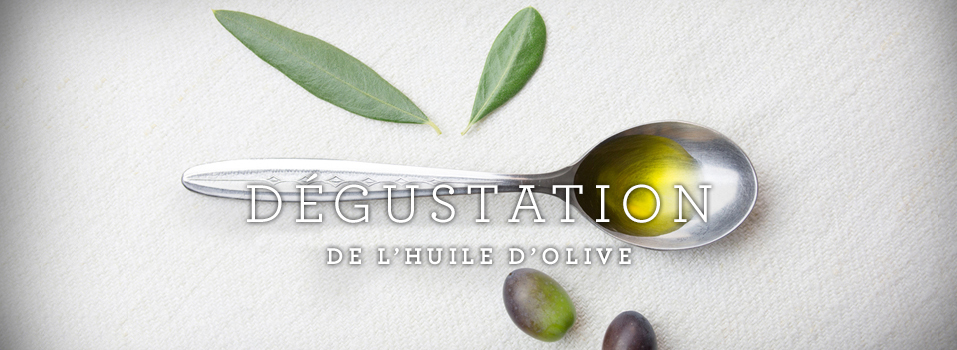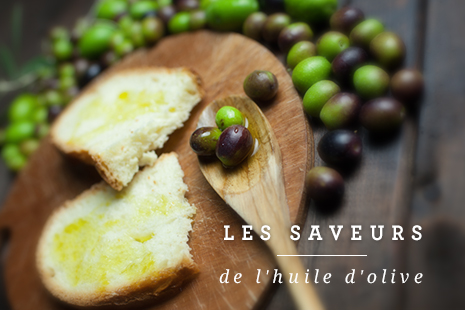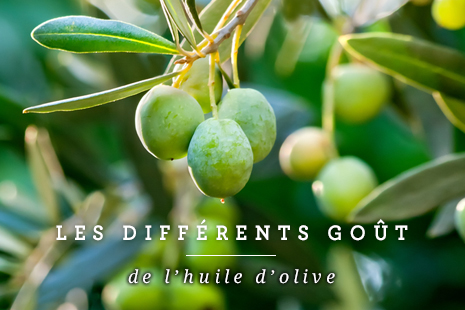

Tasting method :
To really enjoy this olive oil, in particular throughout the assembly, we have to respect some strict rules. Tasting is a blind test, in coloured blue glasses so that the color of olive oil does not affect the final judgment. Indeed, the color of olive oil is not a factor which entering the appreciaition of its taste. Those samples are beforehand warmed up to explode all aromas once in mouth. Usually, we do not exceed 5 differents samples of olive oil per session. Between each tasting, the nibbling of a green apple is necessary to "clean" the mouth and to appreciate the next olive oil without interference of the previous sample. Any tasting starts with an olfactory perception which will direct our brain on notes that may appear in mouth. At the time of tasting, it is necessary to rotate olive oil in his mouth just like wine, to perceive the aromas while gently entering the air that will stimulate our taste buds. Then, generally we do not shallow the sample to appreciate others.
The differents defaults of olive oil :
- Chromed : Flavor of oil from olives piled up in an advanced state of anaerobic fermentation (ie without oxygen).
- Musty - damp : Flavor of the oil obtained from olives attacked by molds and yeasts as a result of storage of the fruits for several days in the humidity.
- Dregs : Flavor characteristic of the oil kept in contact with the "sludge" of settling in the piles and the tanks.
- Vinous-vinegar : This flavor is due to a process of fermentation of olives which gives rise to the formation of acetic acid, ethyl acetate and ethanol.
- Métalic : Characteristic flavor of the oil which has remained in contact with metal surfaces for a long time during grinding, kneading, pressing or storage processes.
- Rancid : Flavor of oils having undergone an oxidation process.

The differents tastes of olive oil :
Olive oil has to be tasted as a wine. It is obvious that there are thousands of perceptible aromas. Aromas of fruits, of vegetables, aromatic herbs…
However, France classify oils in three separate families :
- The fruity black. It is called an oil produced with ripe harvested olives that will be left a few days in box to give an oil with a slight taste called "chromed" .This fruity is controversial beause this taste departs from the defects of olive oil.
- Ripe fruity. It is called an oil produced with ripe harvested olives whose the taste of the oil will be very soft.
- Green fruity. It is called an oil produced with olives harvested still green and whose taste will draw on the ardence and on the intensity. Finding this classification quite absurd and not at all speaking for the consumer, our house decided to make its own classification in three categories :
- Soft Olive oil : for very thin oils.
- Fruity and Soft Olive oil : For delicate but aromatic oils.
- Fruity and Intense Olive oil :For more fiery oil with greener notes.




